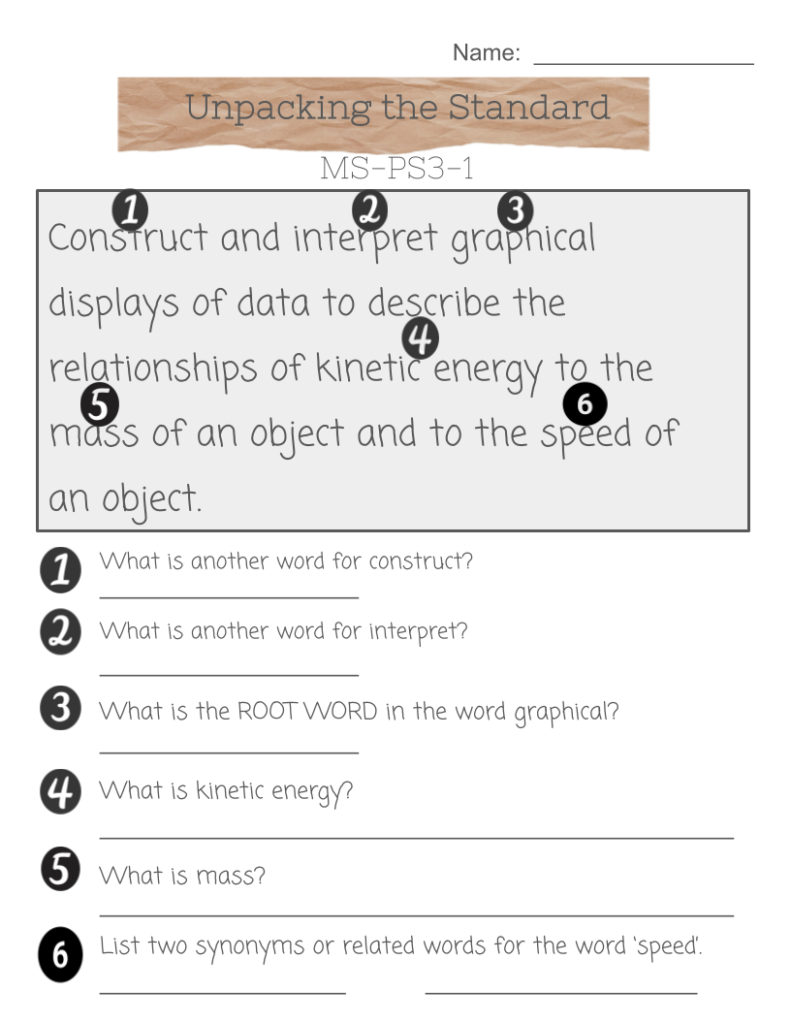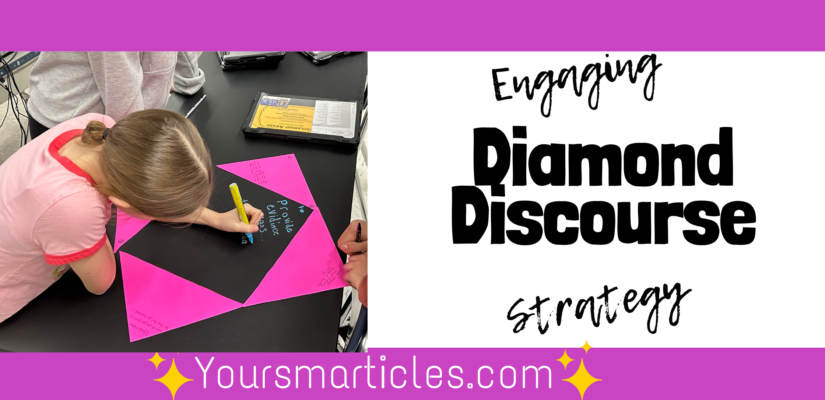
Unlock Student Engagement with Diamond Discourse
Diamond Discourse is a hidden gem of a teaching tool. I discovered it while attending a Master Teacher course at Buffalo State University. And let me tell you, once you try it, you’ll never teach the same way again. Why? Because it’s simple, adaptable, and powerful.
This engaging strategy fosters meaningful student dialogue, encourages critical thinking, and supports student agency. Even better? It works with any subject. Today, let’s shine a light on how you can use Diamond Discourse in a Science classroom.
How Diamond Discourse Works: Step-by-Step
Step #1: Start with a Topic
To begin, introduce your students to a topic, guiding question, or concept. Ask them to write their personal interpretation or explanation of the topic on a right triangle. This encourages independent thinking before collaboration begins.
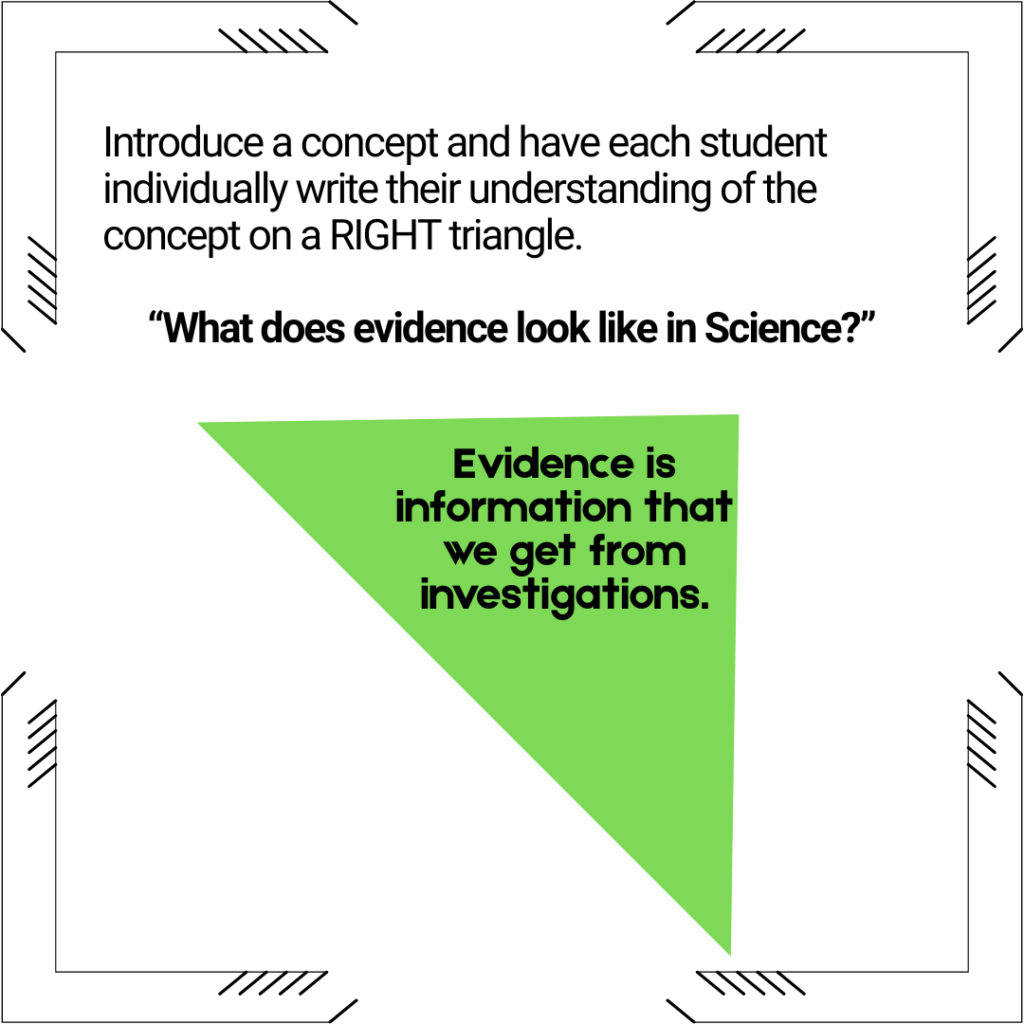
Step #2: Group Discussion
Next, place students into groups of four. Each student shares what they wrote. As they speak, they arrange their triangles into a square shape, placing each triangle at a corner. This visual structure sets the stage for collective thinking.
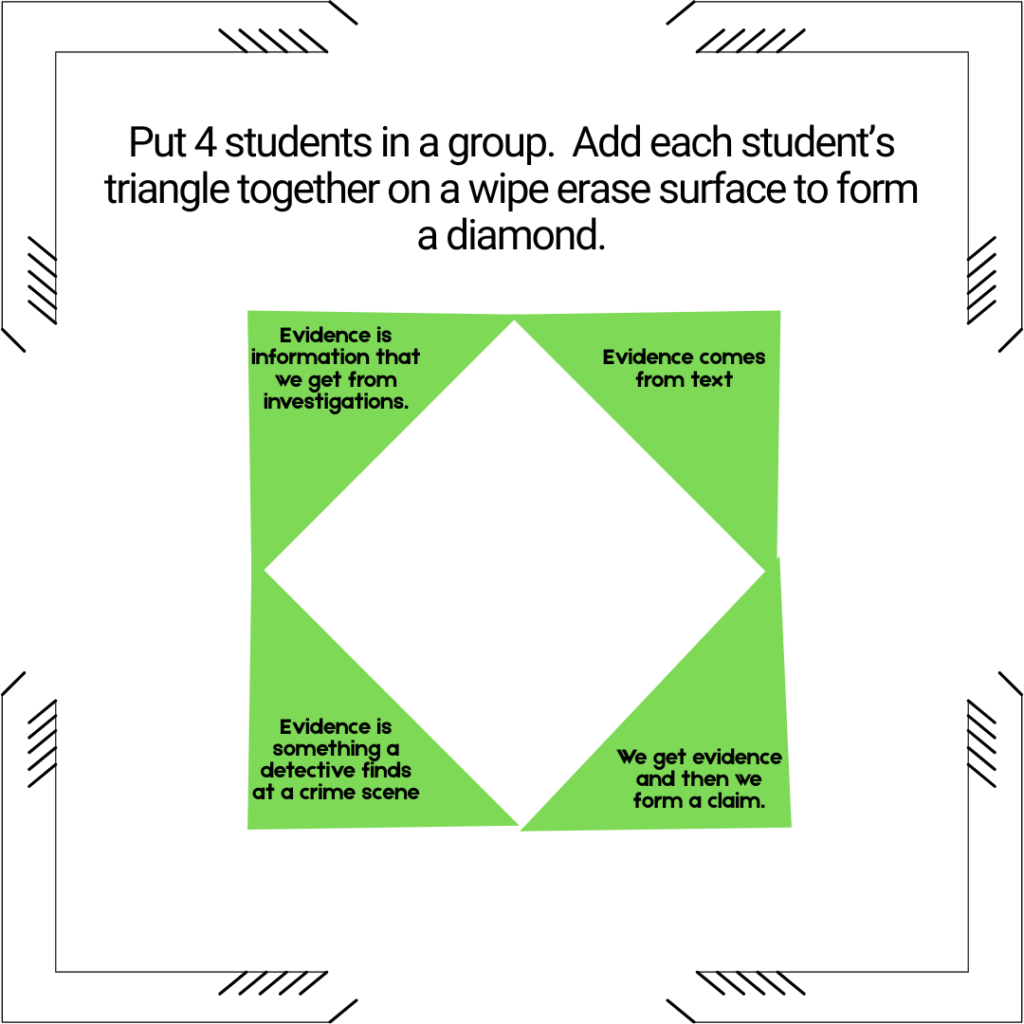
Step #3: Form a Group Consensus
Here’s where the magic happens: students discuss their perspectives, synthesize ideas, and craft a shared explanation. This final version is written in the center of the diamond on a wipe-erase surface or large paper.
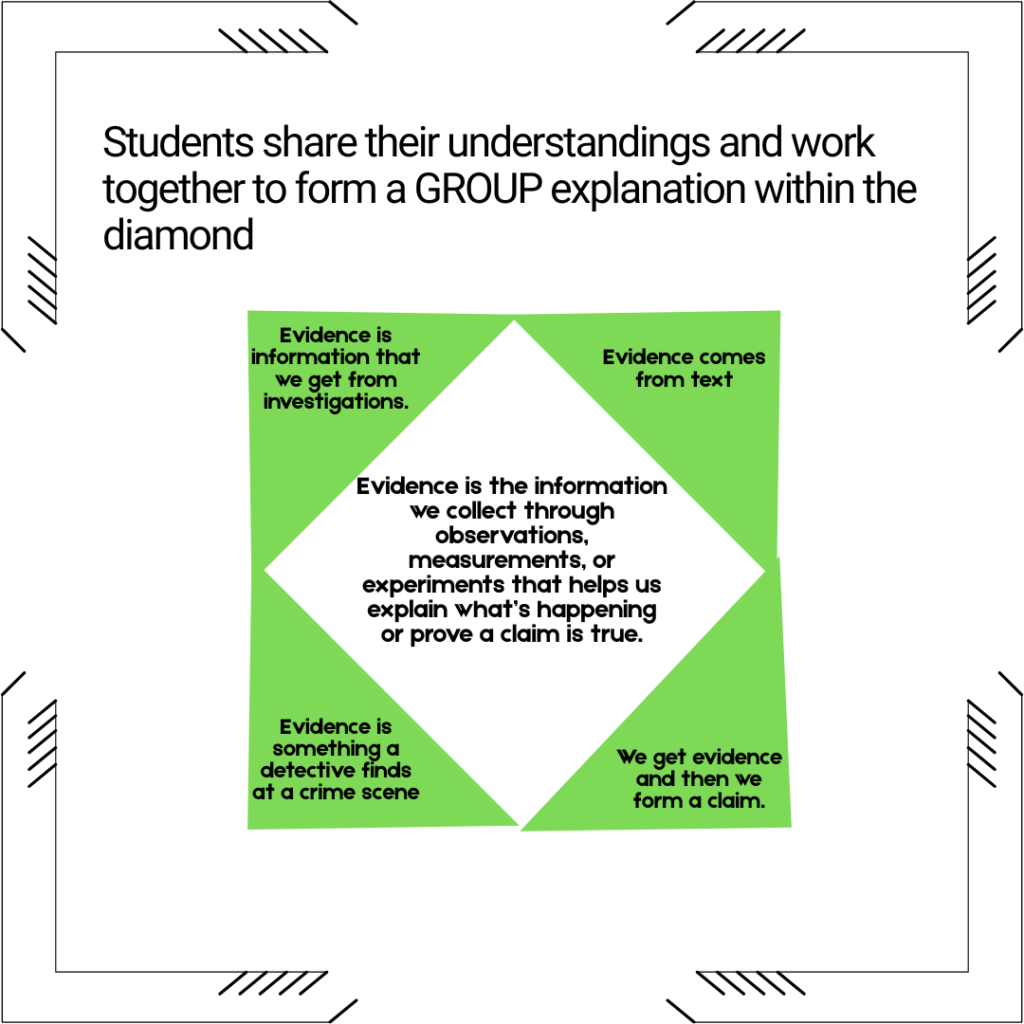
Why Diamond Discourse Works
- Visual Learning: The diamond shape provides a collaborative visual aid.
- Inclusive Dialogue: Every student has a voice at the table.
- Consensus Building: Encourages respectful listening and negotiation.
- Flexibility: Use it in any subject, from Science to Social Studies to Literature.

Tips and Tricks to Maximize Diamond Discourse
- Simple Setup: No need for fancy triangles. Even sticky notes or cut paper will do.
- Clear Orientation: Mark which side of the triangle is “up.” Students often ask!
- Color Coding: Use colored paper to assign groups quickly.
- Add a Jigsaw Twist: After each group reaches consensus, mix them into new multi-color groups. Each student becomes the “expert” in their topic and shares it with their new team.
Using Diamond Discourse to Unpack Standards in Science
One of my favorite uses is at the beginning of a unit—specifically when we unpack a standard. This sets the tone for purposeful learning and helps students understand what’s expected.
Try This!
Assign different sections of a complex NGSS standard to each group. Students use Diamond Discourse to break down their piece and write a shared explanation. Then, do a Jigsaw. One student from each color-coded group joins a new team and teaches their section. Just like that, every student understands the whole standard—and owns their knowledge!

Bonus Applications
- Use it for controversial topics in ELA or Social Studies to encourage multiple perspectives.
- Try it with math problems to encourage diverse strategies.
- Let students evaluate scientific claims using the CER (Claim-Evidence-Reasoning) method.
- Incorporate into project-based learning for consensus on project direction.
FAQs About Diamond Discourse
What subjects work best with Diamond Discourse?
Diamond Discourse is versatile. It shines in Science, but it also enhances discussions in ELA, Social Studies, and even Math.
What materials do I need?
All you need are right triangles (paper, laminated for reuse, or dry-erase), a surface for the group diamond, and a topic.
How long does a session take?
A full round of individual writing, group discussion, and consensus typically takes 20–30 minutes.
How can I differentiate with this strategy?
Modify the complexity of the topic or provide sentence stems for struggling writers.
Can I use this with younger students?
Absolutely! Just simplify the language of the prompts and provide structured support.
What if students don’t agree?
That’s part of the learning! Guide them to practice respectful disagreement and find common ground.
Conclusion: Why You Should Try Diamond Discourse
Diamond Discourse transforms passive learning into active engagement. With every triangle placed and every word debated, students are learning the content. They’re also learning how to think, listen, collaborate, and lead.
It’s not just another classroom activity—it’s a strategy that brings student agency to the forefront. Whether you’re introducing a new concept, breaking down a standard, or reviewing content, Diamond Discourse can enhance the learning experience.
And as always, thanks for Using Your Smarticles!
FREE ✨Smarticles!✨
Connect with ✨Your Smarticles✨ to get our latest content by email.
